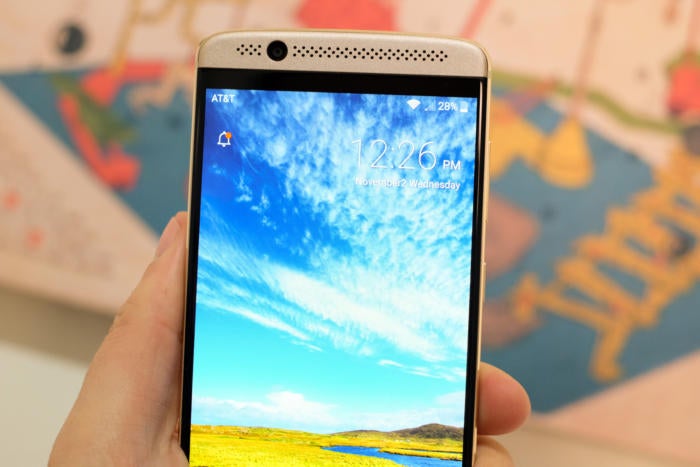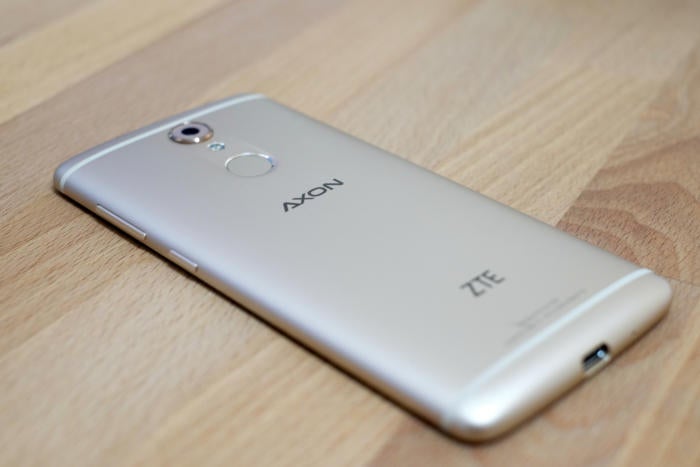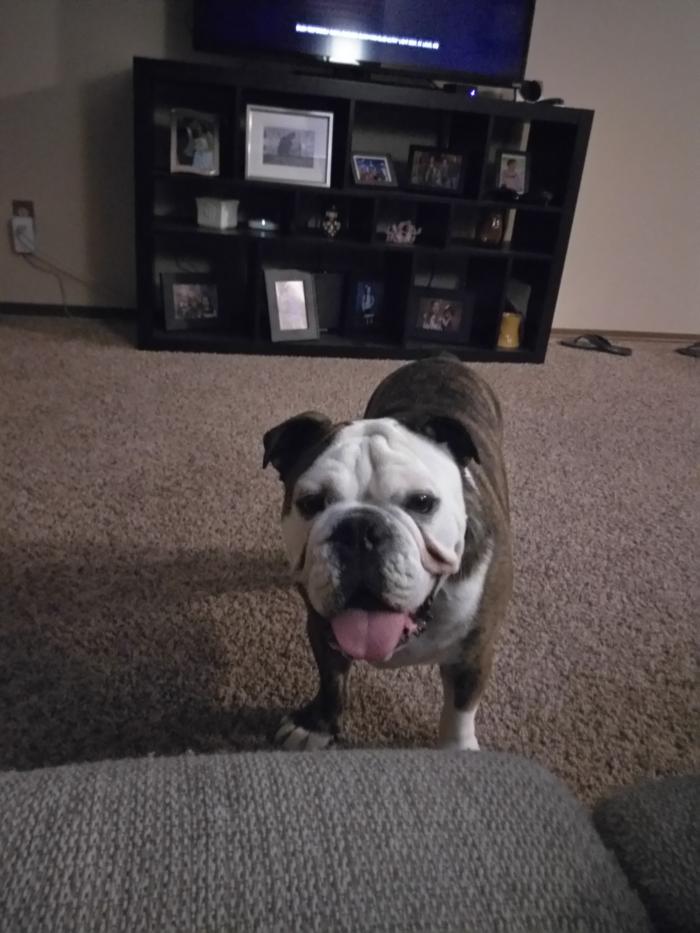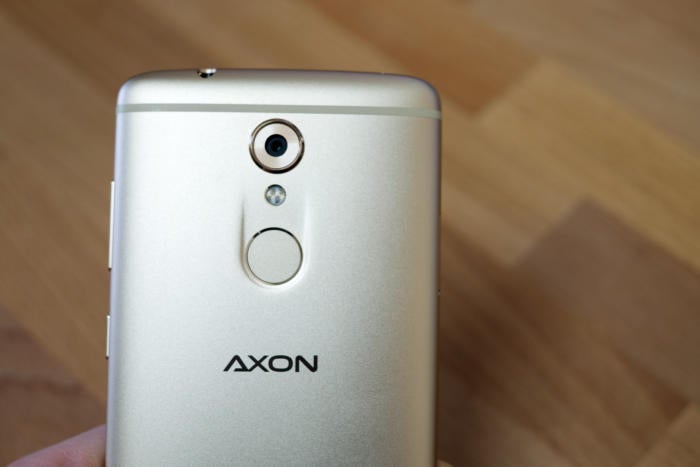The look of the Axon 7 Mini makes me question whether or not some sort of gun capable or producing a shrink ray exists in an evil doctor’s basement lab somewhere.
en looking at the Mini compared to its bigger brother, the Axon 7, the Mini is identical in design layout. The same speaker grills sit above below the display. The camera lens fingerprint sensor are in the same spot, as are the Axon ZTE logos on the back.
I found the Axon 7 it to be good enough to compete with the Oneus 3, for some, even Samsung’s Galaxy S7, in spite of its $400 price tag. It makes sense, then, that ZTE would create a smaller version of the widely praised device, hitting the $300 price point in the process.
It’s disappointing, however, that the performance shrank along with the device.
at do you get for $299?


ZTE still forces you to tap on the the lock screen notification icon before you can see pending notifications.
On paper, the Axon 7 Mini looks like every other mid-range 2016 smartphone. It has a Qualcomm Snapdragon 617 processor, 3 GB of memory, 32 GB of storage, 128 GB microSD support, a 5.2-inch 1080p display, 2,705 milliamp-hour battery, is unlocked to work on GSM carriers in the . It runs Android Marshmallow 6.0.1, along with ZTE’s proprietary MiFavor 4.0 interface.
The SIM card tray pulls double duty, offering a second SIM slot for international users or a microSD slot for those who want to boost the Mini’s storage.
The Mini features a 16-megapixel camera on the back, with an 8-megapixel camera on the front.
ZTE kept a B-C port on the Mini, equipped it with Quick Charge 2.0. And yes, there is a 3.5mm headphone jack.
rformance battery life


The Mini has a rounded back that fits well in most hs.
rformance was a mixed bag for me. At times, I couldn’t tell I was a using a $300 phone. aying Minecraft, the phone kept up as I built a house attempted to mine some coal. I did notice that after about 10 minutes of play, the back of the device near the camera got pretty hot. Not too hot to touch, but hot enough for me to stop playing let it cool down.
Other times, like when trying to wake the phone or jumping between apps, the Mini would struggle to keep up. There is often a pronounced delay or stutter as app is launches or when waking the phone unlocking it using my fingerprint.
Another issue I ran into is that the fingerprint sensor is really finicky. Unlike the sensor on the xel that has some forgiveness in where you place your finger, the Mini requires you to place your finger in nearly the identical spot each time you want to use it.
Further adding to the confusion, when the sensor doesn’t recognize your fingerprint, the device gently vibrates that’s it. The screen doesn’t light up, nor is any sort of error message displayed. It’s confusing frustrating.
The shorter version of my performance impressions: As long as you’re not bouncing between a lot of apps, doing resource-intensive tasks, you should be fine.
Battery life was enough to get through a day with moderate usage, thanks in part to the slower processor 1080p display.
Slow shutter, poor low light performance


This was the best shot I could get with the Axon 7 Mini in a low light situation.
Admittedly, I’ve been spoiled over the past couple of months. First, the ione 7 us launched with all of its fancy camera features. Then the xel arrived, , well, it takes stunning photos regardless of lighting conditions. I found the Axon 7’s camera to do a bang-up job as well.
And then there’s the Axon 7 Mini, with a slow shutter poor low-light shooting.
w-light shots often included a grainy look to them, as is the case with most smartphone cameras that struggle in the same conditions.
I had to consciously remind myself to wait until the photo was captured before moving the phone in order to not capture a blurry shot due to the slow shutter. In fact, I have two or three photos of my palm in the otos app, all taken after I thought the photo had been captured as I began to put the phone back into my pocket.
And because there is a delay, shots of pets or kids are bound to capture a blurry figure resembling the subject.


It’s that time of year, pumpkin picking!
Those two gripes aside, the camera on the Axon 7 Mini does take good outdoor photos in well-lit environments. ZTE has also added a ripoff of the ione’s ve oto feature, where a picture is captured along with a brief video before after the shot.
en using ve oto on the Axon 7 Mini, it only captures video after the shutter button is pressed. It then stores it in the Gallery app as a video, with the first frame being the photo you intended to capture.
Sharing a ve oto gives you the option to share as a photo or a video regardless of what kind of device you are sending it to; something other manufacturers haven’t been able to figure out. So kudos, ZTE.
Spring for the bigger Axon 7


A closer look at the back camera fingerprint reader.
Don’t get me wrong, there’s definitely a market for a $300 aesthetic twin of the Axon 7. But when you take into consideration how much you’re giving up for a $100 discount, it just doesn’t add up.
The bigger Axon 7 is faster, takes better photos, is will Daydream Ready after a future software update.
If you are on a budget $300 is your target, then I would suggest the Moto G4 us.


















